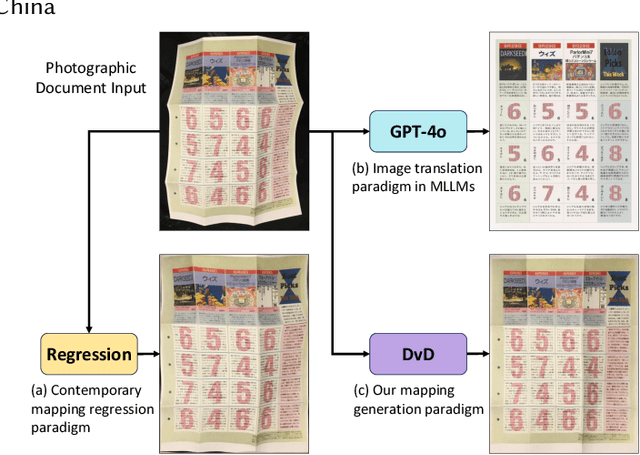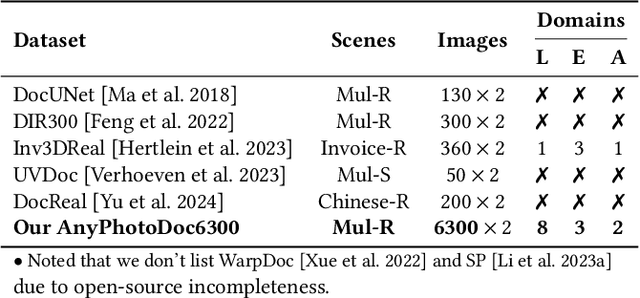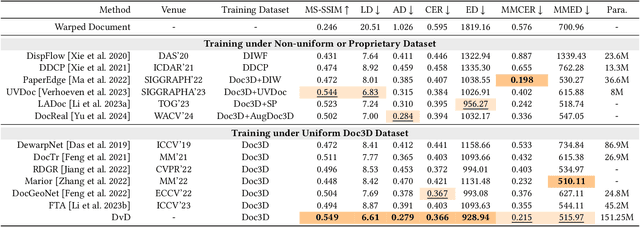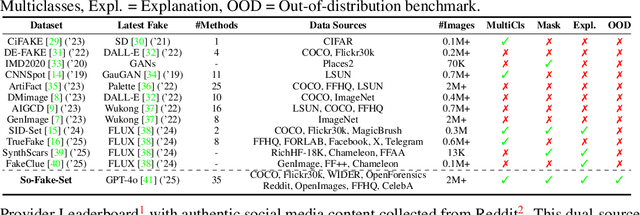Xiaowei Huang
University of Liverpool
Rethinking Multi-Agent Intelligence Through the Lens of Small-World Networks
Dec 19, 2025Abstract:Large language models (LLMs) have enabled multi-agent systems (MAS) in which multiple agents argue, critique, and coordinate to solve complex tasks, making communication topology a first-class design choice. Yet most existing LLM-based MAS either adopt fully connected graphs, simple sparse rings, or ad-hoc dynamic selection, with little structural guidance. In this work, we revisit classic theory on small-world (SW) networks and ask: what changes if we treat SW connectivity as a design prior for MAS? We first bridge insights from neuroscience and complex networks to MAS, highlighting how SW structures balance local clustering and long-range integration. Using multi-agent debate (MAD) as a controlled testbed, experiment results show that SW connectivity yields nearly the same accuracy and token cost, while substantially stabilizing consensus trajectories. Building on this, we introduce an uncertainty-guided rewiring scheme for scaling MAS, where long-range shortcuts are added between epistemically divergent agents using LLM-oriented uncertainty signals (e.g., semantic entropy). This yields controllable SW structures that adapt to task difficulty and agent heterogeneity. Finally, we discuss broader implications of SW priors for MAS design, framing them as stabilizers of reasoning, enhancers of robustness, scalable coordinators, and inductive biases for emergent cognitive roles.
SynthSeg-Agents: Multi-Agent Synthetic Data Generation for Zero-Shot Weakly Supervised Semantic Segmentation
Dec 17, 2025Abstract:Weakly Supervised Semantic Segmentation (WSSS) with image level labels aims to produce pixel level predictions without requiring dense annotations. While recent approaches have leveraged generative models to augment existing data, they remain dependent on real world training samples. In this paper, we introduce a novel direction, Zero Shot Weakly Supervised Semantic Segmentation (ZSWSSS), and propose SynthSeg Agents, a multi agent framework driven by Large Language Models (LLMs) to generate synthetic training data entirely without real images. SynthSeg Agents comprises two key modules, a Self Refine Prompt Agent and an Image Generation Agent. The Self Refine Prompt Agent autonomously crafts diverse and semantically rich image prompts via iterative refinement, memory mechanisms, and prompt space exploration, guided by CLIP based similarity and nearest neighbor diversity filtering. These prompts are then passed to the Image Generation Agent, which leverages Vision Language Models (VLMs) to synthesize candidate images. A frozen CLIP scoring model is employed to select high quality samples, and a ViT based classifier is further trained to relabel the entire synthetic dataset with improved semantic precision. Our framework produces high quality training data without any real image supervision. Experiments on PASCAL VOC 2012 and COCO 2014 show that SynthSeg Agents achieves competitive performance without using real training images. This highlights the potential of LLM driven agents in enabling cost efficient and scalable semantic segmentation.
RecGPT-V2 Technical Report
Dec 16, 2025Abstract:Large language models (LLMs) have demonstrated remarkable potential in transforming recommender systems from implicit behavioral pattern matching to explicit intent reasoning. While RecGPT-V1 successfully pioneered this paradigm by integrating LLM-based reasoning into user interest mining and item tag prediction, it suffers from four fundamental limitations: (1) computational inefficiency and cognitive redundancy across multiple reasoning routes; (2) insufficient explanation diversity in fixed-template generation; (3) limited generalization under supervised learning paradigms; and (4) simplistic outcome-focused evaluation that fails to match human standards. To address these challenges, we present RecGPT-V2 with four key innovations. First, a Hierarchical Multi-Agent System restructures intent reasoning through coordinated collaboration, eliminating cognitive duplication while enabling diverse intent coverage. Combined with Hybrid Representation Inference that compresses user-behavior contexts, our framework reduces GPU consumption by 60% and improves exclusive recall from 9.39% to 10.99%. Second, a Meta-Prompting framework dynamically generates contextually adaptive prompts, improving explanation diversity by +7.3%. Third, constrained reinforcement learning mitigates multi-reward conflicts, achieving +24.1% improvement in tag prediction and +13.0% in explanation acceptance. Fourth, an Agent-as-a-Judge framework decomposes assessment into multi-step reasoning, improving human preference alignment. Online A/B tests on Taobao demonstrate significant improvements: +2.98% CTR, +3.71% IPV, +2.19% TV, and +11.46% NER. RecGPT-V2 establishes both the technical feasibility and commercial viability of deploying LLM-powered intent reasoning at scale, bridging the gap between cognitive exploration and industrial utility.
Fragile by Design: On the Limits of Adversarial Defenses in Personalized Generation
Nov 13, 2025Abstract:Personalized AI applications such as DreamBooth enable the generation of customized content from user images, but also raise significant privacy concerns, particularly the risk of facial identity leakage. Recent defense mechanisms like Anti-DreamBooth attempt to mitigate this risk by injecting adversarial perturbations into user photos to prevent successful personalization. However, we identify two critical yet overlooked limitations of these methods. First, the adversarial examples often exhibit perceptible artifacts such as conspicuous patterns or stripes, making them easily detectable as manipulated content. Second, the perturbations are highly fragile, as even a simple, non-learned filter can effectively remove them, thereby restoring the model's ability to memorize and reproduce user identity. To investigate this vulnerability, we propose a novel evaluation framework, AntiDB_Purify, to systematically evaluate existing defenses under realistic purification threats, including both traditional image filters and adversarial purification. Results reveal that none of the current methods maintains their protective effectiveness under such threats. These findings highlight that current defenses offer a false sense of security and underscore the urgent need for more imperceptible and robust protections to safeguard user identity in personalized generation.
Chasing Consistency: Quantifying and Optimizing Human-Model Alignment in Chain-of-Thought Reasoning
Nov 09, 2025Abstract:This paper presents a framework for evaluating and optimizing reasoning consistency in Large Language Models (LLMs) via a new metric, the Alignment Score, which quantifies the semantic alignment between model-generated reasoning chains and human-written reference chains in Chain-of-Thought (CoT) reasoning. Empirically, we find that 2-hop reasoning chains achieve the highest Alignment Score. To explain this phenomenon, we define four key error types: logical disconnection, thematic shift, redundant reasoning, and causal reversal, and show how each contributes to the degradation of the Alignment Score. Building on this analysis, we further propose Semantic Consistency Optimization Sampling (SCOS), a method that samples and favors chains with minimal alignment errors, significantly improving Alignment Scores by an average of 29.84% with longer reasoning chains, such as in 3-hop tasks.
Can MLLMs Absorb Math Reasoning Abilities from LLMs as Free Lunch?
Oct 16, 2025Abstract:Math reasoning has been one crucial ability of large language models (LLMs), where significant advancements have been achieved in recent years. However, most efforts focus on LLMs by curating high-quality annotation data and intricate training (or inference) paradigms, while the math reasoning performance of multi-modal LLMs (MLLMs) remains lagging behind. Since the MLLM typically consists of an LLM and a vision block, we wonder: Can MLLMs directly absorb math reasoning abilities from off-the-shelf math LLMs without tuning? Recent model-merging approaches may offer insights into this question. However, they overlook the alignment between the MLLM and LLM, where we find that there is a large gap between their parameter spaces, resulting in lower performance. Our empirical evidence reveals two key factors behind this issue: the identification of crucial reasoning-associated layers in the model and the mitigation of the gaps in parameter space. Based on the empirical insights, we propose IP-Merging that first identifies the reasoning-associated parameters in both MLLM and Math LLM, then projects them into the subspace of MLLM, aiming to maintain the alignment, and finally merges parameters in this subspace. IP-Merging is a tuning-free approach since parameters are directly adjusted. Extensive experiments demonstrate that our IP-Merging method can enhance the math reasoning ability of MLLMs directly from Math LLMs without compromising their other capabilities.
Distributed Nash Equilibrium Seeking Algorithm in Aggregative Games for Heterogeneous Multi-Robot Systems
Sep 19, 2025Abstract:This paper develops a distributed Nash Equilibrium seeking algorithm for heterogeneous multi-robot systems. The algorithm utilises distributed optimisation and output control to achieve the Nash equilibrium by leveraging information shared among neighbouring robots. Specifically, we propose a distributed optimisation algorithm that calculates the Nash equilibrium as a tailored reference for each robot and designs output control laws for heterogeneous multi-robot systems to track it in an aggregative game. We prove that our algorithm is guaranteed to converge and result in efficient outcomes. The effectiveness of our approach is demonstrated through numerical simulations and empirical testing with physical robots.
Contrastive Prompt Clustering for Weakly Supervised Semantic Segmentation
Aug 23, 2025



Abstract:Weakly Supervised Semantic Segmentation (WSSS) with image-level labels has gained attention for its cost-effectiveness. Most existing methods emphasize inter-class separation, often neglecting the shared semantics among related categories and lacking fine-grained discrimination. To address this, we propose Contrastive Prompt Clustering (CPC), a novel WSSS framework. CPC exploits Large Language Models (LLMs) to derive category clusters that encode intrinsic inter-class relationships, and further introduces a class-aware patch-level contrastive loss to enforce intra-class consistency and inter-class separation. This hierarchical design leverages clusters as coarse-grained semantic priors while preserving fine-grained boundaries, thereby reducing confusion among visually similar categories. Experiments on PASCAL VOC 2012 and MS COCO 2014 demonstrate that CPC surpasses existing state-of-the-art methods in WSSS.
DvD: Unleashing a Generative Paradigm for Document Dewarping via Coordinates-based Diffusion Model
May 28, 2025



Abstract:Document dewarping aims to rectify deformations in photographic document images, thus improving text readability, which has attracted much attention and made great progress, but it is still challenging to preserve document structures. Given recent advances in diffusion models, it is natural for us to consider their potential applicability to document dewarping. However, it is far from straightforward to adopt diffusion models in document dewarping due to their unfaithful control on highly complex document images (e.g., 2000$\times$3000 resolution). In this paper, we propose DvD, the first generative model to tackle document \textbf{D}ewarping \textbf{v}ia a \textbf{D}iffusion framework. To be specific, DvD introduces a coordinate-level denoising instead of typical pixel-level denoising, generating a mapping for deformation rectification. In addition, we further propose a time-variant condition refinement mechanism to enhance the preservation of document structures. In experiments, we find that current document dewarping benchmarks can not evaluate dewarping models comprehensively. To this end, we present AnyPhotoDoc6300, a rigorously designed large-scale document dewarping benchmark comprising 6,300 real image pairs across three distinct domains, enabling fine-grained evaluation of dewarping models. Comprehensive experiments demonstrate that our proposed DvD can achieve state-of-the-art performance with acceptable computational efficiency on multiple metrics across various benchmarks including DocUNet, DIR300, and AnyPhotoDoc6300. The new benchmark and code will be publicly available.
So-Fake: Benchmarking and Explaining Social Media Image Forgery Detection
May 24, 2025



Abstract:Recent advances in AI-powered generative models have enabled the creation of increasingly realistic synthetic images, posing significant risks to information integrity and public trust on social media platforms. While robust detection frameworks and diverse, large-scale datasets are essential to mitigate these risks, existing academic efforts remain limited in scope: current datasets lack the diversity, scale, and realism required for social media contexts, while detection methods struggle with generalization to unseen generative technologies. To bridge this gap, we introduce So-Fake-Set, a comprehensive social media-oriented dataset with over 2 million high-quality images, diverse generative sources, and photorealistic imagery synthesized using 35 state-of-the-art generative models. To rigorously evaluate cross-domain robustness, we establish a novel and large-scale (100K) out-of-domain benchmark (So-Fake-OOD) featuring synthetic imagery from commercial models explicitly excluded from the training distribution, creating a realistic testbed for evaluating real-world performance. Leveraging these resources, we present So-Fake-R1, an advanced vision-language framework that employs reinforcement learning for highly accurate forgery detection, precise localization, and explainable inference through interpretable visual rationales. Extensive experiments show that So-Fake-R1 outperforms the second-best method, with a 1.3% gain in detection accuracy and a 4.5% increase in localization IoU. By integrating a scalable dataset, a challenging OOD benchmark, and an advanced detection framework, this work establishes a new foundation for social media-centric forgery detection research. The code, models, and datasets will be released publicly.
 Add to Chrome
Add to Chrome Add to Firefox
Add to Firefox Add to Edge
Add to Edge